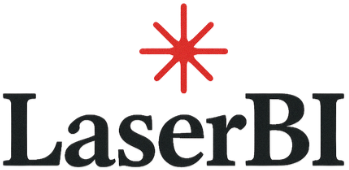
Introduction
Every data team knows the feeling: the ping of yet another “quick” request.
“Can you send me last quarter’s pipeline by region?”
“Do we have the latest conversion rates by campaign?”
“How many active users do we have by product line?”
It starts small. Then balloons.
Before you know it, your analysts are spending 70% of their time building reports — not solving problems or finding insights.
But what if you could eliminate reporting requests forever — without losing control of your data?
The Real Cost of Manual Reporting
Reporting seems harmless until you zoom out:
-
Hours lost: Each ad hoc request might take 15–60 minutes. Multiply that by dozens of requests a week and it’s days of lost productivity.
-
Error-prone processes: Copy-pasting data into decks or spreadsheets leads to inconsistencies.
-
Data bottlenecks: When only a few team members know how to get the data, they become the single point of failure.
-
Delayed decisions: Leaders can’t act on data they don’t have. Waiting days for updates creates decision paralysis.
In modern companies, reporting is the #1 hidden tax on growth.
Why Reporting Requests Never End
Even with dashboards, most teams still ask for reports. Why?
-
Dashboards don’t speak business.
Many tools are built for analysts, not decision-makers. A VP of Sales doesn’t want to click through 4 tabs and filters. -
Data is fragmented.
Metrics are spread across CRMs, ERPs, ad platforms, and product databases. No single place shows the full picture. -
People don’t trust the numbers.
If a dashboard doesn’t update in real-time or lacks clear definitions, users go back to emailing analysts “just to be sure.” -
No self-serve mechanism.
Most non-technical users don’t want to write SQL or learn Looker Studio. They want to ask questions in plain English and get answers.
What If Reports Wrote Themselves?
The future isn’t “faster reporting.”
It’s no reporting at all.
Imagine this:
-
Your VP of Marketing opens Slack and types:
“What were conversion rates by campaign last month?”
-
Instantly, they get a chart — with full context, filters, and source attribution.
No BI tickets. No bottlenecks. Just answers.
The Framework to Eliminate Reporting Requests
To permanently stop reporting chaos, adopt the R.I.D.E. Framework:
1. Reduce Friction to Access Data
Use tools that integrate directly with your data warehouse (e.g., Snowflake, BigQuery, Redshift) and surface key metrics where people work (Slack, Teams, Email, etc.).
2. Identify Core Metrics
Define a canonical list of trusted metrics (e.g., MRR, CAC, Pipeline by Region) — and ensure everyone uses the same definitions.
3. Democratize Access with Natural Language BI
Adopt tools that allow business users to ask questions in plain English — no SQL or dashboard building needed.
Example: LaserBI lets you ask, “What’s our churn rate for Q2 by customer segment?” and get an answer in seconds.
4. Enable Proactive Alerts & Subscriptions
Set up proactive alerts and recurring snapshots. Let leaders subscribe to key reports instead of requesting them ad hoc.
Case Study: From Reporting Chaos to Calm
Before LaserBI:
A fast-growing SaaS company had a team of 5 analysts fielding 40+ report requests per week. Time to insight? 3–5 days.
After LaserBI:
-
80% of reporting questions answered via natural language.
-
Executive team gets weekly KPIs directly in Slack.
-
Analysts refocused on deep analysis and forecasting.
-
Reporting turnaround time reduced from 3 days to 3 seconds.
The Bottom Line
Eliminating reporting requests isn’t about working faster — it’s about changing how reporting happens.
The companies that win aren’t the ones with the most dashboards.
They’re the ones where any decision-maker can get answers without asking.
That’s what LaserBI delivers — and that’s why teams are finally escaping the reporting hamster wheel.
Ready to eliminate reporting requests forever?
Try LaserBI free and experience frictionless, self-serve BI.
✅ Natural language queries
✅ Slack + Teams integrations
✅ Zero learning curve


0 Comments